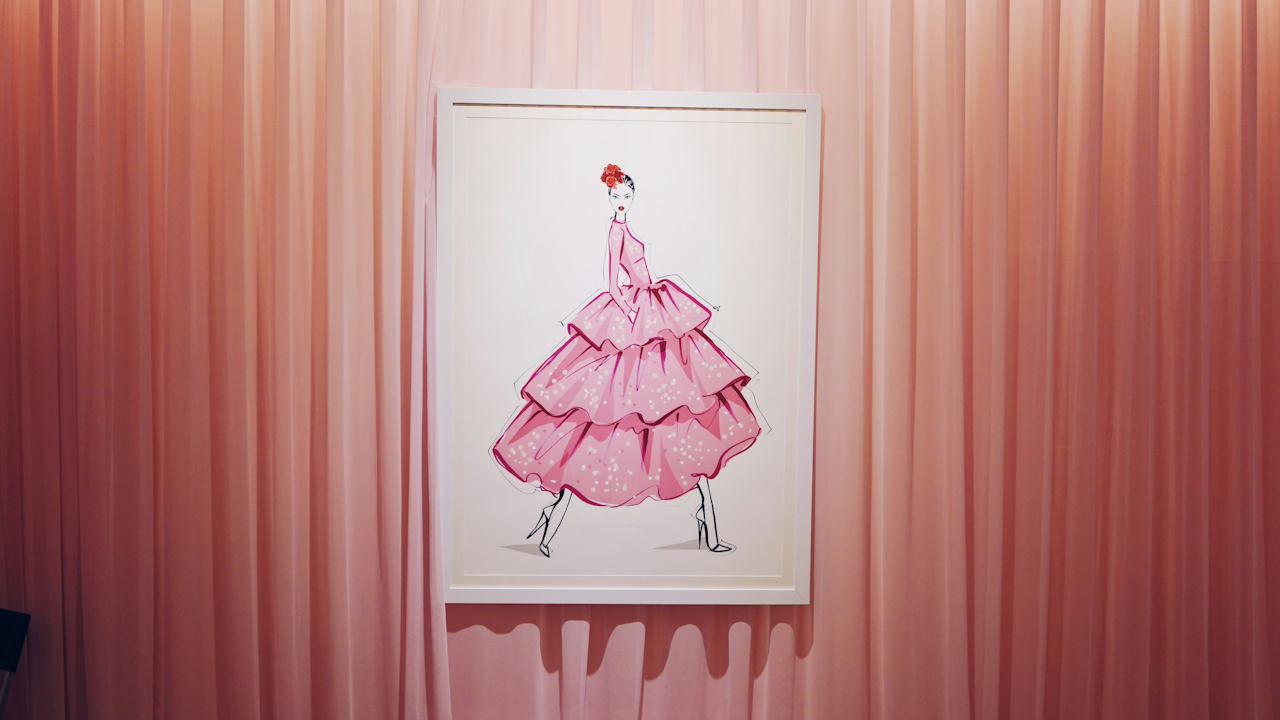Throughout history, art and fashion have existed in close conversation. Fashion designers have often turned to visual art for inspiration, finding new ways to translate painting, sculpture, and other creative expressions into wearable forms. Just as art movements reflect cultural shifts, fashion too responds to the mood and concerns of the time. The result is a dynamic relationship where each discipline enriches the other. From the vivid colors of Impressionism to the geometric sharpness of Cubism, the flowing energy of Abstract Expressionism, or the rebellion of Pop Art, art movements have left a lasting mark on the clothes people wear.
Impressionism and the Birth of Modern Fashion
In the late nineteenth century, Impressionism captured fleeting moments with soft brushstrokes, bright palettes, and a focus on light. This style mirrored a society in transition, with urban growth, new technologies, and a growing middle class seeking leisure. Fashion of the era reflected similar values. Women’s dresses became lighter in color and fabric, echoing the pastel tones seen in Monet or Renoir’s works. Instead of heavy, rigid garments, designers leaned toward flowing silhouettes that emphasized movement. The airy qualities of Impressionism encouraged a more natural style of dressing that reflected both beauty and modernity.
Art Nouveau and Ornamental Design
At the turn of the twentieth century, Art Nouveau introduced fluid lines, floral motifs, and a fascination with nature. Artists like Alphonse Mucha celebrated organic patterns that curved and spiraled across posters and decorative arts. Fashion absorbed this emphasis on ornament and elegance. Designers incorporated botanical embroidery, swirling lines in lace and beading, and gowns that flowed with a sense of rhythm. Jewelry also embraced this artistic language, with pieces shaped like flowers, dragonflies, or abstract vines. Art Nouveau revealed how fashion could elevate natural motifs into high style, blending art with adornment.
Cubism and Modernist Experimentation
In the early twentieth century, Cubism disrupted traditional perspectives. Pioneered by Picasso and Braque, the movement broke objects into fragmented planes and sharp geometric forms. This radical shift in visual art found echoes in fashion design. The sleek, modern silhouettes of the 1920s showed a fascination with geometry. Designers like Sonia Delaunay directly drew from Cubist principles, creating bold textiles filled with triangles, circles, and squares. Clothing became not just functional but also a moving canvas that displayed abstract composition. Cubism encouraged fashion to experiment with structure and to embrace a futuristic spirit.
Surrealism and the Play of Imagination
Surrealism emerged in the 1920s and 1930s, fueled by an interest in dreams, the unconscious mind, and unexpected juxtapositions. Salvador Dalí and René Magritte created works that unsettled viewers by combining familiar objects in strange ways. Fashion designers found immense inspiration in this movement. Elsa Schiaparelli, one of the most innovative designers of her time, collaborated with artists like Dalí to produce garments that blurred the line between art and clothing. Her iconic lobster dress, shoe hat, and skeleton dress were playful, shocking, and deeply tied to Surrealist aesthetics. Surrealism pushed fashion toward a more conceptual direction, showing that clothing could also be an artistic statement that challenged norms.
Abstract Expressionism and Movement in Fabric
After World War II, Abstract Expressionism dominated the art world, especially in the United States. Artists such as Jackson Pollock and Willem de Kooning emphasized spontaneity, gesture, and emotional intensity. Fashion took cues from this emphasis on freedom and dynamic energy. Textiles began to feature splattered, painterly prints that mimicked the canvases of Abstract Expressionists. Designers created clothing that celebrated individuality and personal expression rather than rigid formality. The influence of this movement marked a shift toward a more liberated, expressive form of dressing in the postwar period.
Pop Art and the Rise of Youth Culture
In the 1960s, Pop Art reshaped the relationship between art and everyday life. Artists like Andy Warhol and Roy Lichtenstein elevated consumer goods, advertisements, and comic imagery into high art. This colorful, playful movement aligned perfectly with the growing influence of youth culture and mass media. Fashion designers adopted bold primary colors, polka dots, comic-strip graphics, and patterns resembling product packaging. Mary Quant’s miniskirt revolution and Yves Saint Laurent’s Mondrian dress exemplified how Pop Art’s aesthetics translated into fashion. Clothing became a medium to celebrate mass culture, fun, and accessibility while also maintaining an edge of rebellion.
Minimalism and the Language of Simplicity
Minimalism in art, prominent in the 1960s and 1970s, emphasized simplicity, repetition, and purity of form. Artists such as Donald Judd and Dan Flavin stripped art down to its essential elements. This aesthetic found a strong echo in fashion. Designers like Calvin Klein and Jil Sander embraced clean lines, neutral colors, and understated silhouettes. The minimalist approach to fashion rejected excess and ornament, instead highlighting precision, tailoring, and timeless appeal. This connection illustrates how art’s philosophical embrace of simplicity translated into wardrobes around the world.
Contemporary Crossovers
In recent decades, the dialogue between art and fashion has grown even more direct. Collaborations between artists and fashion houses are now common, blurring boundaries. Louis Vuitton has partnered with Takashi Murakami and Yayoi Kusama to produce collections featuring vibrant artwork. Alexander McQueen drew inspiration from art history, often staging runway shows that resembled performance art. These examples reveal that fashion is not only influenced by art movements but increasingly functions as a platform for artistic expression in its own right.
Conclusion
Fashion and art have always been intertwined, each reflecting and reshaping cultural values. Impressionism softened clothing with light colors, Cubism introduced bold geometry, Surrealism brought dreamlike imagination, and Pop Art celebrated mass culture. Later movements such as Minimalism reinforced simplicity, while contemporary collaborations demonstrate the ongoing vitality of this relationship. By borrowing from the aesthetics, philosophies, and emotions of art movements, fashion has repeatedly reinvented itself. Just as a painting or sculpture captures the spirit of its age, so too does fashion. The dialogue between these fields ensures that both remain vibrant, creative, and deeply connected to the human experience.

